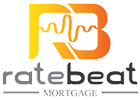
Programs That Assist First-Time Home Buyers with Down Payments
Homeownership is a step towards long-term financial security. Purchasing a home not only provides you and your family with a home of your own but is also an asset. You gain equity in your home in two ways over time: first, by paying down your mortgage loan, and second, by appreciation (when the value of your home rises in the real estate market).
However, one of the most significant hurdles to buying a home is the down payment. Fortunately, with low-down-payment lending programs and down payment assistance grants available, you may not need as much money as you think.
Here is all you need to know about DPA programs and how to find one near you today.
What Exactly Is Down Payment Assistance?
DPA programs help first-time homebuyers by providing grants, low-interest loans, and other forms of support. DPAs originate from a variety of sources, including charity and the business sector, as well as state, county, and city government-sponsored programs. The amount of assistance can range from a few thousand to a hundred thousand dollars and are often applicable to the down-payment portion of the purchase. However, depending on the program, you may be allowed to use the funds for closing fees as well.
Types of DPA Programs
There are over 2,000 DPA programs in the United States. Depending on the programs in your area and your financial situation you may be eligible for various kinds of down payment assistance.
Let us look at the four key types of down payment assistance.
1. Grants
Grants are gifts that offset the cost of your down payment. That is, they are not required to be paid back. These are usually government-funded, municipal, or state-run schemes. They can also come from non-profit organizations and are the most popular types of DPA programs.
Down payment grants are typically available to low-income first-time home buyers and require you to stay in your home for a specified number of years before selling. However, if you sell your house before the agreed-upon time frame, you must repay the grant amount at closing.
2. Low-Interest or Second Mortgage Loan
Your lender or another agency may offer you the opportunity to obtain a second mortgage loan along with your first mortgage. You can utilize the loan proceeds to cover your down payment.
However, you must repay this loan monthly, usually when you make payments on your initial loan. This implies you will have to make two mortgage payments per month.
The idea is to get these loans at a cheap interest rate. Some lenders or organizations may provide these as no-interest loans.
However, before committing to this type of loan, ensure that your family’s budget can meet both these payments, property insurance, property taxes, utilities, and essential maintenance.
3. Deferred Second Mortgage (At 0% Interest)
Borrowers who require down payment assistance may potentially benefit from deferred-payment loans. These are zero percent loans that you do not have to repay until you sell, refinance, move, or pay off your first mortgage. This implies that you can accept this loan without affecting your monthly budget.
These loans, however, are not forgiven; if you ever leave your home, you must return them. You will usually repay them using the proceeds from the sale of your home.
4. Forgivable Second Mortgage Zero Interest Loans
The fourth type of down payment assistance is forgivable second mortgage loans. As the name implies these are second mortgages that may be forgiven — that is, you do not have to pay back the loan. These are 0% interest second mortgages. But, the homeowner must meet specific conditions. They cannot sell, refinance, or move out for a set period (5-10 years). If you move or refinance your loan before the forgiveness period expires, you will usually have to repay the funds or at least a portion of them.
Who can qualify for down payment assistance?
Many DPAs require applicants to be first-time homebuyers (that is, they have not purchased a home in the previous three years). But there are some alternatives for repeat buyers as well.
Each down payment assistance loan has its requirements and may include:
- Income requirements: Many down payment loans are available to low- and middle-income purchasers.
- Enroll in a homebuyer education course.
- A minimum credit score.
- Comply with location criteria: Some programs are location-specific, and you must buy from an authorized retailer.
- Stay within the maximum purchase price of the home that is based on the median home purchase price in the area.
- Pay some money out of your pocket for the home purchase.
What Mortgages Are Eligible For Down Payment Assistance?
Most (DPA) programs need you to borrow from an authorized lender and employ a mortgage scheme that has been approved.
You may be asked to sign up for a specific mortgage package.
However, down payment approved mortgages frequently include the most popular mortgage loans, such as:
- Fannie Mae and Freddie Mac conforming loans
- (FHA) (Federal Housing Administration) loans
- VA (Department of Veterans) loans
- USDA (U.S. Department of Agriculture) loans.
In other words, the mortgage solutions available through your DPA program may be extremely versatile.
How to Locate Down Payment Loans or Grants
Speaking with your loan officer or broker is the best approach to identify down payment help options for which you qualify. They will know about all the lending programs or local grants that can assist you.
Furthermore, you can:
- Request referrals from your real estate agent or Realtor.
- Contact your state’s housing financing department or authority (HFA)
- Visit the website of the HUD (Department of Housing and Urban Development), which lists programs by county, city, and state.
Finally, a simple Google search for “down payment aid grants in [state/city/county]”can help you find current programs in your area that you are interested in.


